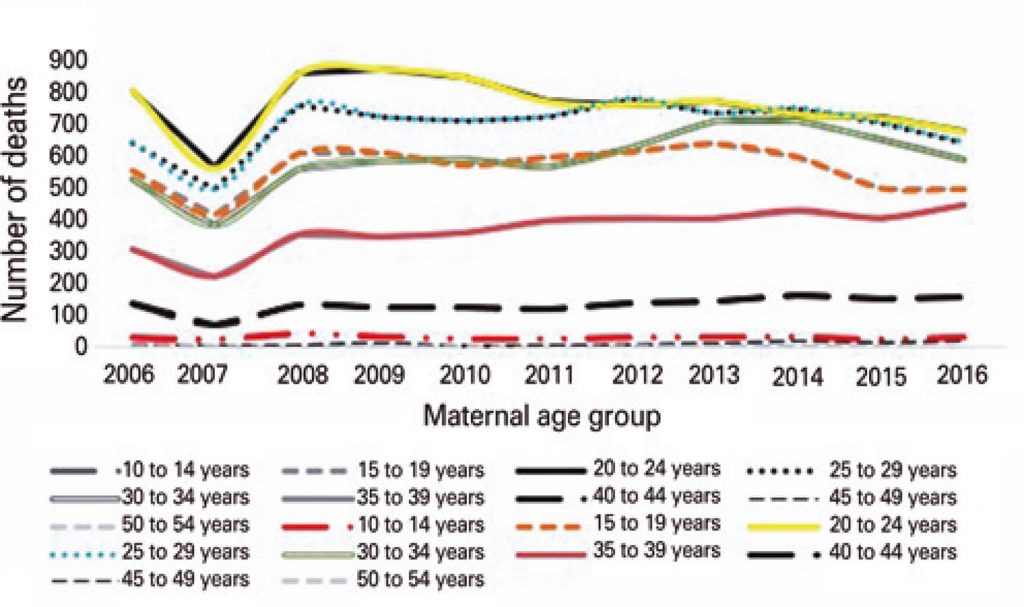einstein (São Paulo). 02/Aug/2021;19:eAO5663.
Infant mortality in the Metropolitan Region of São Paulo: an ecological study
DOI: 10.31744/einstein_journal/2021AO5663
ABSTRACT
Objective
To determine the impact of risk factors on infant mortality in the Metropolitan Region of São Paulo according to maternal and neonate characteristics, as well as mode of delivery.
Methods
An ecological, quantitative study based on secondary data retrieved from infant mortality and live birth data systems. Data from 39 municipalities located in the Metropolitan Region of São Paulo were analyzed. Newborn and maternal variables were extracted from the Information Technology Department of the Unified Health System. Absolute and relative frequencies were presented, as well as linear regression and Pearson´s correlation coefficient.
Results
The following maternal profile prevailed from 2006 to 2016: 8 to 11 years of education (β=73.58; p=0.023), age between 30 and 34 years (β=19.04; p=0.015) and delivery by cesarean section (β=39.59; p=0.009) after full-term pregnancy (β=-14.20; p=0.324). Mortality rates decreased in neonates compared to other age groups (β=-25.30; p<0.001). Infant mortality rates tended to be higher among women experiencing pre-term (r=0.86; p<0.001) or post-term (r=0.95; p<0.001) gestation.
Conclusion
Maternal age and level of education increased among women giving birth in the Metropolitan Region of São Paulo from 2006 to 2016. These were relevant factors for infant mortality rate reduction.
353

